Your Trusted
Cyber Security Partner

Cyber Security Threat Protection: Strengthen Your Defences!
As the sophistication of corporate information technology environments increases, so too does the ability of cyber security criminals who adapt quickly to develop new ways to penetrate corporate and public systems. It is estimated that a business will fall victim to a ransomware attack every 11 seconds in 2021 and the cost of these attacks is estimated at approximately $6 trillion.
As these threats increase in frequency and scope, organizations recognize the need to address and manage this risk. However, what organizations have come to realize is that there is a special skill set required and that there is a growing shortage of cyber security experts in Canada. At stake is a company’s client data, operating systems and ultimately their profitability and viability. Understanding this need, Cover-All has formed a Strategic Alliance with CyberWolfe to build a Cyber Security Operations Centre (CSOC), located at the Cover-All Managed Cloud and IT Services’ Data Centre in Markham, Ontario. CyberWolfe’s team is equipped with security experts and cyber threat intelligence specialists from the Canadian Armed Forces. We chose to partner with CyberWolfe because they have served over 300 Canadian based businesses, adopting best practices to provide cyber security protection solutions. We feel this experience will serve our clients well.
“CyberWolfe chose to partner with Cover-All because of their world class, 11,000 square foot Data Centre, that is SOC 2 Type II compliant and ISO 27001 certified. This makes Cover-All the ideal partner to build a joint Cyber Security Operations Centre.” says, RJ Sahi, Sr. Vice President
Strategic Partnerships, CyberWolfe Inc”.
We can help mitigate the risk of data breaches including:
For more information, please contact us today!
Trusted Managed Cyber Security Operation Centre Services
Log Management is essential in ensuing that computer security records are stored in sufficient detail for an appropriate period-of-time. Our team can perform routine log analysis to identify security incidents, policy violations, fraudulent activity, and operational problems. These logs are also useful when performing auditing and forensic analysis, supporting internal investigations, establishing baselines, and identifying operational trends and long-term problems.
Managed Monitoring is the process of continuously observing an IT system to detect data breaches, cyber threats, or other system vulnerabilities. Our team can monitor and provide your IT team with proactive cyber security alerts to network usage anomalies, thereby allowing your team to investigate and determine if a threat exists so they can take decisive action.
Managed Detection and Response (MDR) is a managed cyber security service that provides intrusion detection of malware and malicious activity in your network and assists in rapid incident response to eliminate those threats with succinct remediation actions. Our highly skilled security analysts use specialized technology to uncover threats, extending the tools available to your IT team.
Active Threat Hunting is the process of proactively searching through networks or datasets to detect and respond to advanced cyber threats that evade traditional security controls. Our experienced cyber security analysts will proactively search for and identify security incidents or threats that currently deployed that automated detection methods did not identify. Cyber threat hunting digs deep to find malicious actors in your environment that have slipped past your initial endpoint security defenses.
Vulnerability Management helps to proactively review for flaws in your code or design that may compromise the security of an endpoint or network. This includes:
E-mail monitoring provides a wealth of information on both individual users and departments to help prevent a security compromise or the loss of sensitive. According to a Verizon Data Breach Report, 92% of all malware attacks occur through e-mail. Monitoring employee e-mails in the workplace is an essential component of threat detection, and data loss prevention.
Endpoint security management is a policy-based approach to network security that requires endpoint devices to comply with specific criteria before they are granted access to network resources. Our team can utilize endpoint security management tools to manage and control computing devices that request access to the corporate network. When a client attempts to log onto the network, the server program validates user credentials and scans the device to make sure that it complies with defined corporate security policies before allowing access to the network. Devices that do not comply with policy are given limited access or quarantined on a virtual LAN (VLAN). Endpoints that do not comply with policy can be controlled by the system to varying degrees including removing local administrative rights or restricting Internet browsing capabilities.
Threat assessment is an evaluation of events that can adversely affect operations and/or specific assets. Our team is highly trained in the evaluation of security threats and will evaluate historical information which is a primary source for threat assessments, including past criminal and terrorist events. A comprehensive threat assessment considers actual, inherent, and potential threats.
Security awareness training is a strategy used by IT security professionals to prevent and mitigate user risk. An IBM study found that 95% of cyber security breaches were as a result of human error. Our security awareness training can help employees understand the role they play in helping to combat information security breaches. Effective security awareness training helps employees combat information security breaches by understand the security risks associated with their actions and helping them to identify cyber-attacks they may encounter.
Shared Visibility allows an organization to identify, assess, monitor, and respond to cyber threats. Our team can provide you with network visibility helping you to detect policy issues and cyber threats to protect and prevent service-impacting issues.
Integration Intrusion Detection Systems (IDS) analyze network traffic for signatures that match known cyberattacks. An IDS uses integrated intrusion signatures for identifying potential malicious activities capable of damaging your network. Intrusion Prevention Systems (IPS) also analyzes packets but can also stop the packet from being delivered based on what kind of attacks it detects — helping stop the attack. Our intrusion prevention systems work by scanning all network traffic helping to prevent threats including:
Stakeholder Reporting provides a snapshot into the security of your IT systems that affect every aspect of your organization, most notably its profitability. Stakeholders have a vested interest in the security of an organization’s IT infrastructure and often require reporting on the health and risks posed to a business. Our team can help develop stakeholder reports, providing risk assessments and solutions to mitigate potential cyber security threats.
User Behaviour Analytics (UBA) is a cyber security process that helps to detect insider threats, targeted attacks, and financial fraud. Our team can analyze patterns of human behavior, and apply algorithms and statistical analysis to detect meaningful anomalies from those patterns to detect potential threats.
Additional Cyber Security Services
In addition to our managed cyber security services, we can offer you a host of testing, simulations, and assessments to meet your business needs.
Penetration Testing simulates real-world attacks on components of your IT environment to test out the detection and response capabilities of your employees, processes, and technology to identify where vulnerabilities exist in your current environment. Our Penetration Testing Report will provide you with the outcome of the testing and step-by-step mitigation action plan where we will address each vulnerability and its potential impacts to your organization.
Vulnerability Assessment identifies weak spots in your company’s environment and helps you take the necessary actions to prevent a potential cyber threat. Applications, Systems, and Infrastructure need proper configurations and timely updates, but to keep your data secure, you must continuously scan your systems and devices to detect vulnerabilities as they arise.
Ransomware Protection includes phishing simulations which are a great way to determine the strength of your organization’s e-mail security. Our simulations use real world examples, that look similar to malicious e-mails, which are sent to your employees to assess their response to phishing and e-mail attacks. This simulation safeguards your business against social-engineering threats and trains your employees to identify and report them. Our simulations identify employees in need of training and incorrectly setup e-mail infrastructure and we will work with your organization to train employees and strengthen systems to reduce the likely success of a ransomware attack.
How We Can Help Your Business
Achieve Your IT Goals

Cover-All Managed IT Services

Latest News

IT Infrastructure Security
SMBs can strengthen security and manage the demands on their IT infrastructure as they experience growth while minimizing the impact [...]

What is a CSOC, and Why is it important to your organization?
A Cyber Security Operations Centre (CSOC) is the backbone of cyber security protection. It provides situational awareness of the threat [...]

Top 10 Cyber Security Strategies for Small and Medium Sized Businesses
It is not a fad anymore. This is not a drill. At this stage, businesses should be including cyber security [...]


